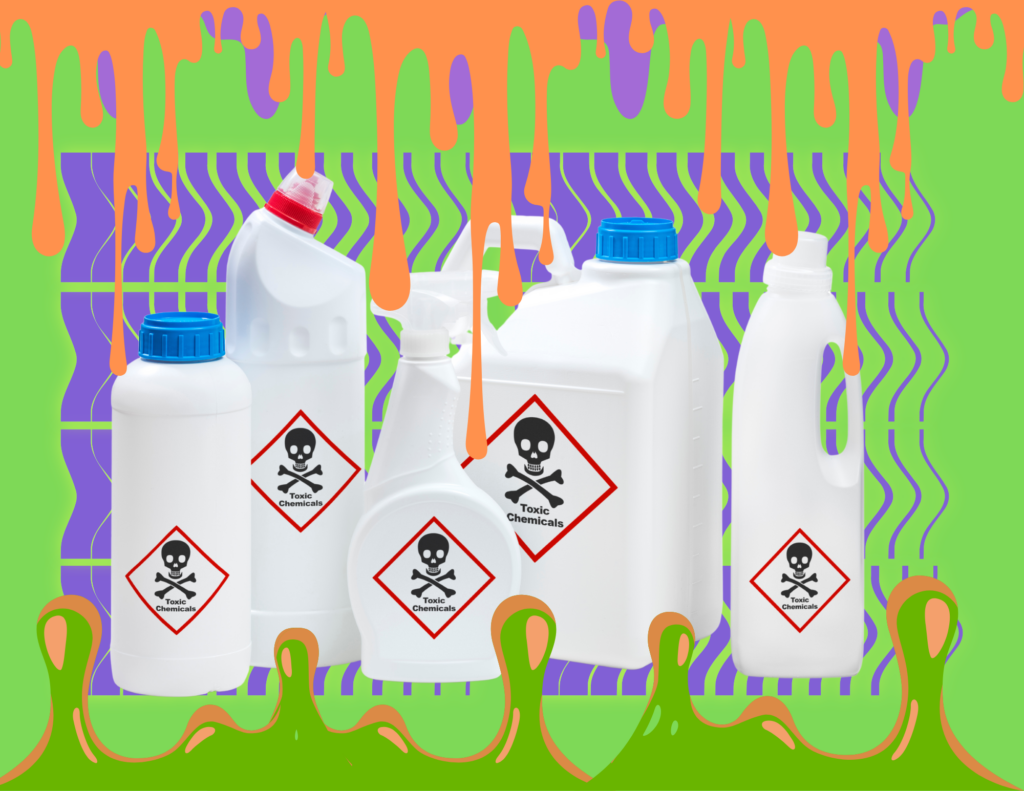No More ‘House of Horrors’ Thanks to These New Laws
Several California laws prohibiting dangerous chemicals from household products go into effect on or after January 1, 2025.

Halloween is the one time when we welcome ghouls, ghosts, and goblins coming to our homes (and, if your neighborhood is anything like mine, a variety of tiny superheroes). This season, however, the Legislature is dealing with a different kind of house of horrors: dangerous chemicals in everyday products that affect millions of Californians’ health. From cancer-causing food dyes to lung-damaging fiberglass in our furniture, California’s State Legislature and the Governor have enacted legislation this session to protect consumers. Here is a look at a handful of these new laws aimed at increasing health and safety for Californians.
The California Food Safety Act (AB 2316) by Assemblymember Jesse Gabriel will prohibit food containing harmful artificial dyes from being served in California public schools. This is a “first-of-its-kind legislation that aims to prohibit California public schools from serving foods containing six synthetic food dyes—red 40, yellow 5, yellow 6, blue 1, blue 2, and green 3—associated with developmental and behavioral harms to children,” according to Food Safety Magazine. The magazine noted the legislation was developed in response to a report published by the California Environmental Protection Agency (EPA) in 2021 that linked synthetic food dyes to hyperactivity and other neurobehavioral effects in children. AB 2316 is a huge step in the right direction toward eliminating harmful chemicals from being consumed by children.
The T.A.M.P.O.N. Act (AB 2515) by Assemblymember Diane Papan is also known as “Take All Menstrual Product PFAS Out Now.” This legislation mandates the removal of regulated PFAS chemicals from menstrual products. PFAS – perfluoroalkyl and polyfluoroalkyl substances, or “forever chemicals.” These forever chemicals have now been linked to a wide range of health risks in both human and animal studies— according to the NRDC, including kidney and testicular cancer, hormone disruption, liver and thyroid problems, interference with vaccine effectiveness, reproductive harm, and abnormal fetal development.
AB 347 by Assemblymember Phil Ting is another legislative effort to remove PFAS from consumer goods. AB 347 requires the Department of Toxic Substances Control (DTSC) to enforce and ensure compliance with three existing laws that set limits for (PFAS) in food packaging, textiles, and juvenile products. AB 347 builds on successful legislation in recent years to phase out PFAS, going a step further to ensure that those products and sellers are complying, which will translate to safer products for consumers.
As this was the second year of the two-year session, there were also several big wins last year to improve health and safety by removing toxic chemicals from food and consumer products.
The California Food Safety Act (AB 418) was authored by Assemblymember Jesse Gabriel who also introduced AB 2316 discussed above. This legislation bans four toxic chemicals from food being sold in California after January 1, 2027, Brominated Vegetable Oil, Potassium Bromate, Propylparaben, and Red Dye No. 3. This legislation, sponsored by the Environmental Working Group and Consumer Reports, protects Californians from food additive chemicals linked to a wide array of alarming health harms, including a higher risk of cancer, hyperactivity and other behavioral problems, harm to the nervous system, and even damage to DNA, according to EWG.
In other efforts to keep us safe and reduce our exposure to known contaminants, Assemblymember Laura Friedman’s AB 1059 was signed into law last year prohibiting the sale of juvenile products, mattresses, or upholstered furniture containing textile fiberglass. According to Everyday Health, long-term exposure to fiberglass is associated with lung disease, according to Johnson-Arbor, while even short-term exposure can cause lung inflammation. Keeping these contaminants out of children’s beds will prevent these problems.
The Cosmetic Safety Act (AB 496) was another landmark piece of legislation by Assemblymember Laura Friedman in 2023, which bans the sale of cosmetic products that contain 26 known harmful chemicals. Assemblymember Friedman who has been an environmental health and safety champion during her tenure in the legislature also authored a similar bill in the previous session (2021-2022) banning PFAS from cosmetic products, AB 2771 cosponsored by the Breast Cancer Prevention Partners. In addition to the Cosmetic Safety Act, The Toxic-Free Cosmetic Act of 2020 (AB 2762) by Assemblymember Al Muratsuchi goes into effect this January 2025.
This legislative session was not all treats without any tricks as not everything in the personal health and safety category advanced. For example, Assemblymember Dawn Addis’ AB 2201 to remove chemicals known to cause harm to human health from air care products stalled in this year’s session. According to Addis: “Although air fresheners are advertised as improving indoor air quality, some chemicals used as ingredients in these products can pose significant health risks to consumers. Because we spend most of our time indoors, exposures to these products inside of homes, in our schools, and at our workplaces can add up quickly. Consumers deserve to know that products being sold and used in the state are safe.” We will see if this gets resurrected next year.
What product-safety and food-safety topics do you think the California State Legislature should address next year? Comment in the chat or reach out to me at ashjian@law.ucla.edu. Have a happy and safe Halloween (and enjoy some dye-free candy)!







Reader Comments